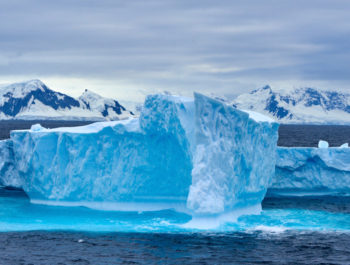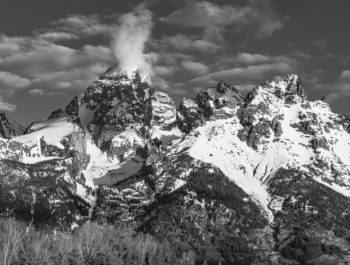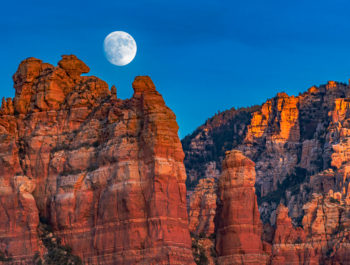My First Major Photography Trip Since 2019 Part I – Teton NP, Wyoming
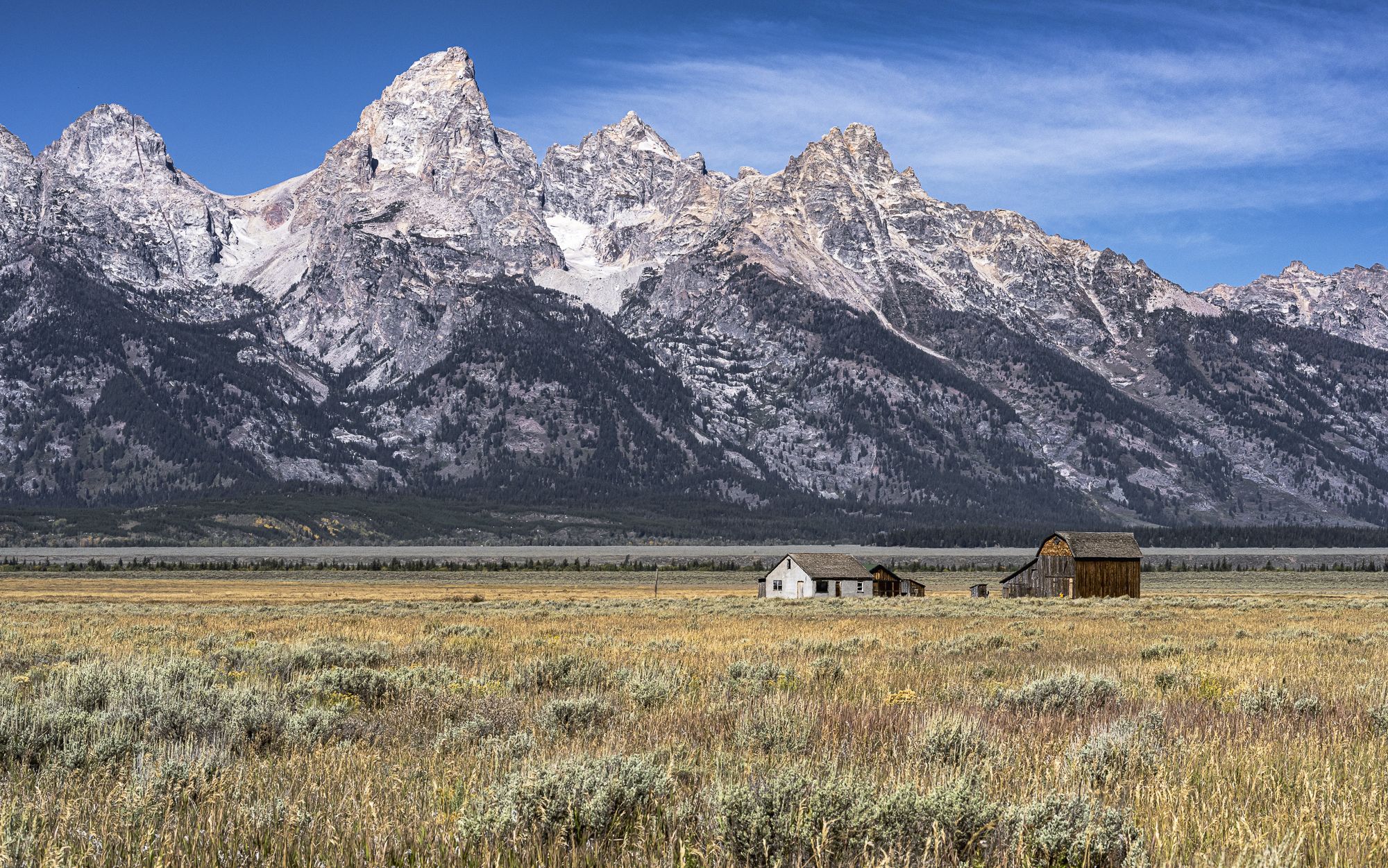
Prologue
From 2005 through 2019, my wife and I took 50 interstate and international field trips for the purpose of photographing and painting landscapes and wildlife. Soon afterward, Covid 19 spread throughout the world making it ill-advised to travel. We did make one trip to visit family in California in July 2020 and contracted Covid 19 on the day we returned. Despite advanced age we recovered at home without medical assistance. But we were cautious thereafter. This September, “armed” with natural immunity plus two Moderna inoculations, we traveled to some of our favorite national parks in Wyoming and Montana which are blessed with both beautiful vistas and much wildlife.
Often, I advise photographers to do thorough research before their photography excursions. I choose to approach my trips like a military campaign. I gather intelligence on current and forecast conditions and then layout primary objectives. A detailed plan then follows with locations, routes, and dates. But, because factors like weather, air quality, and traffic continue to change by the time I arrive on site, I also layout alternative objectives. Finally, I prepare myself to quickly switch gears if dictated by facts on the ground. My inventory of cameras and lenses is already optimized for versatility and compactness as well as for performance.
For this trip my primary objective was to capture good wildlife images to support one of two additional photography books I am writing. The other book – on landscape photography – already has sufficient material. However, my secondary objective was to capture fresh Autumn landscapes if color developed toward the end of the trip. That also worked well for my wife who is primarily a landscape painter. The tactical part of this plan was just to be alert to interesting images if neither good wildlife opportunities nor Fall color developed. Our plan was to spend six days in Teton NP and Yellowstone NP in Wyoming, and ten days in northwest Montana, mostly in Glacier NP and Whitefish. We would take three days to drive from Sedona to Jackson going and three days back swinging through Idaho and Utah.
The worst scenario occurred. Despite visiting these parks well after Labor Day, all three parks were inundated with record crowds. The underfunded National Park Service had their hands full managing this traffic And, the impact on wildlife was notable everywhere we went, as animals avoided proximity to people. Color was also late in developing in Wyoming and Montana, laying waste to our secondary objective, though there were still some good landscape opportunities.
That’s where luck comes in. Idaho and Utah, which we only drove through, developed some of the best color in years. And most of this was not from yellow Aspen but instead from orange-red Oaks and Maples. Fortunately for us, it was everywhere along I-15, as we had limited time. Though it wasn’t part of our trip, this beautiful display continued all the way to Sedona. So, I think it fitting to include these in Part IV along with the Idaho and Utah Autumn-2021 images.
TETON NATIONAL PARK
Don’t forget if you are a Silver or Gold member and signed in, you can click on an image to see it larger.
Jackson, WY traffic was as congested as in the cities from which many visitors sought escape. Despite my weeks of listening to weather and air quality reports, and hoping for improvement, my first mornings in Teton NP were disappointing. Though there for wildlife photography, capturing dramatic images of animals with smoggy backgrounds doesn’t work well either. However, I had time, and hoped for the best. At least I had the company of my wife and two photographer friends from Minnesota and Washington.
We did spot a Moose bull, cow and calf cooling off in the woods. Though we waited for an hour and a half, there was no movement. We took several images, and then moved on. The following image is more evidential than artistic. But, it does have a certain mood…..
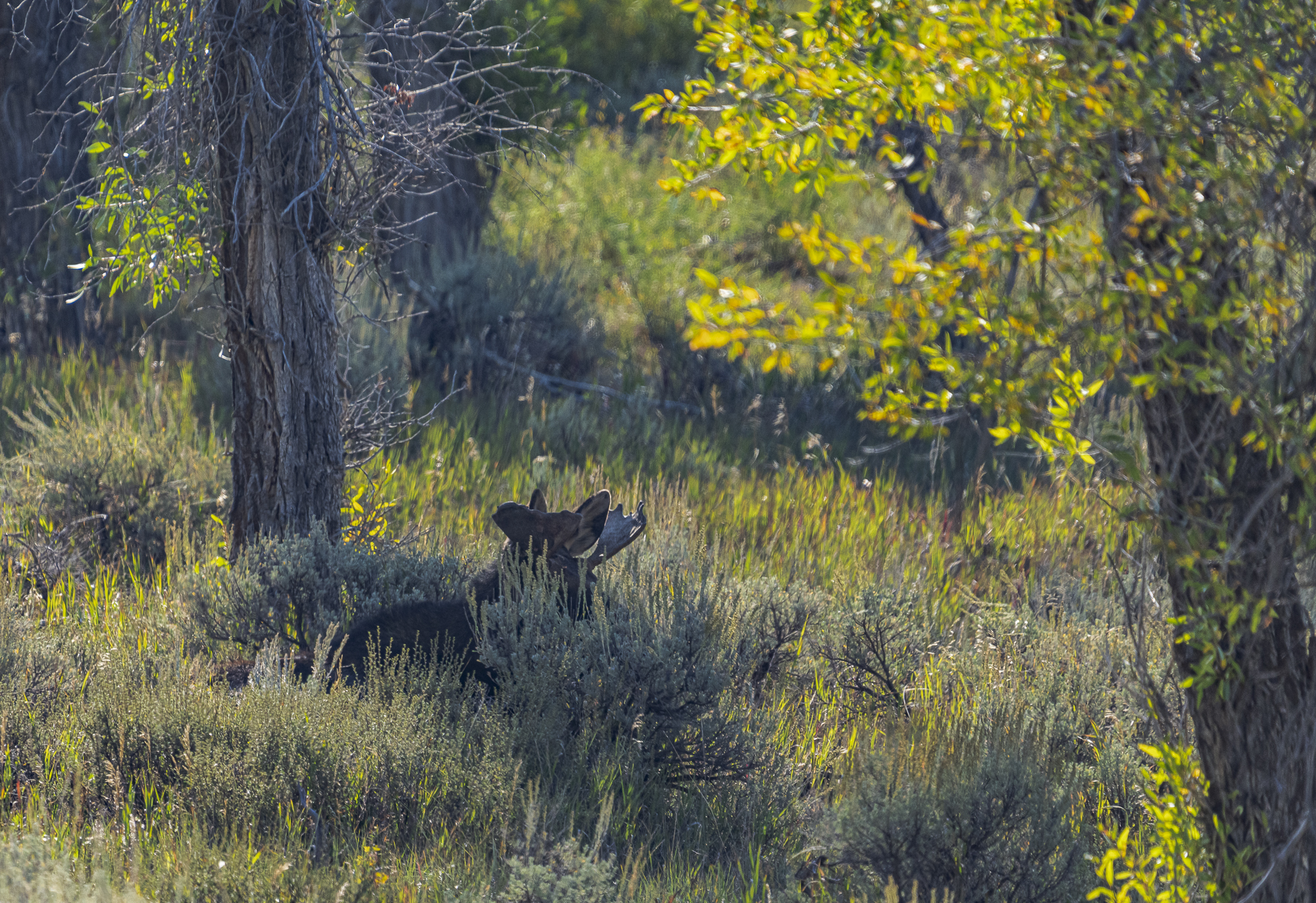
We had better luck at Antelope Flats, where there were a few “Antelope”.
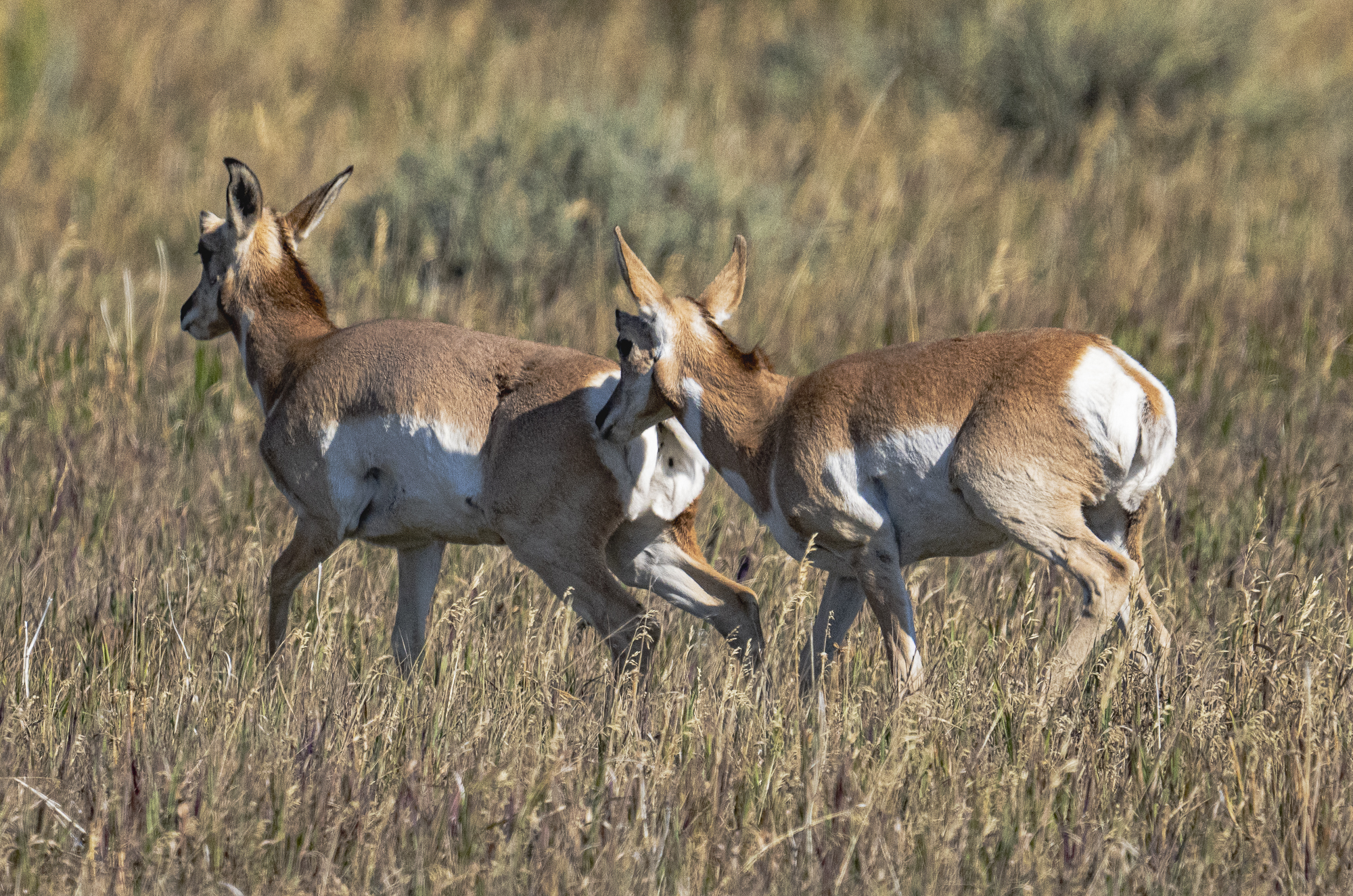
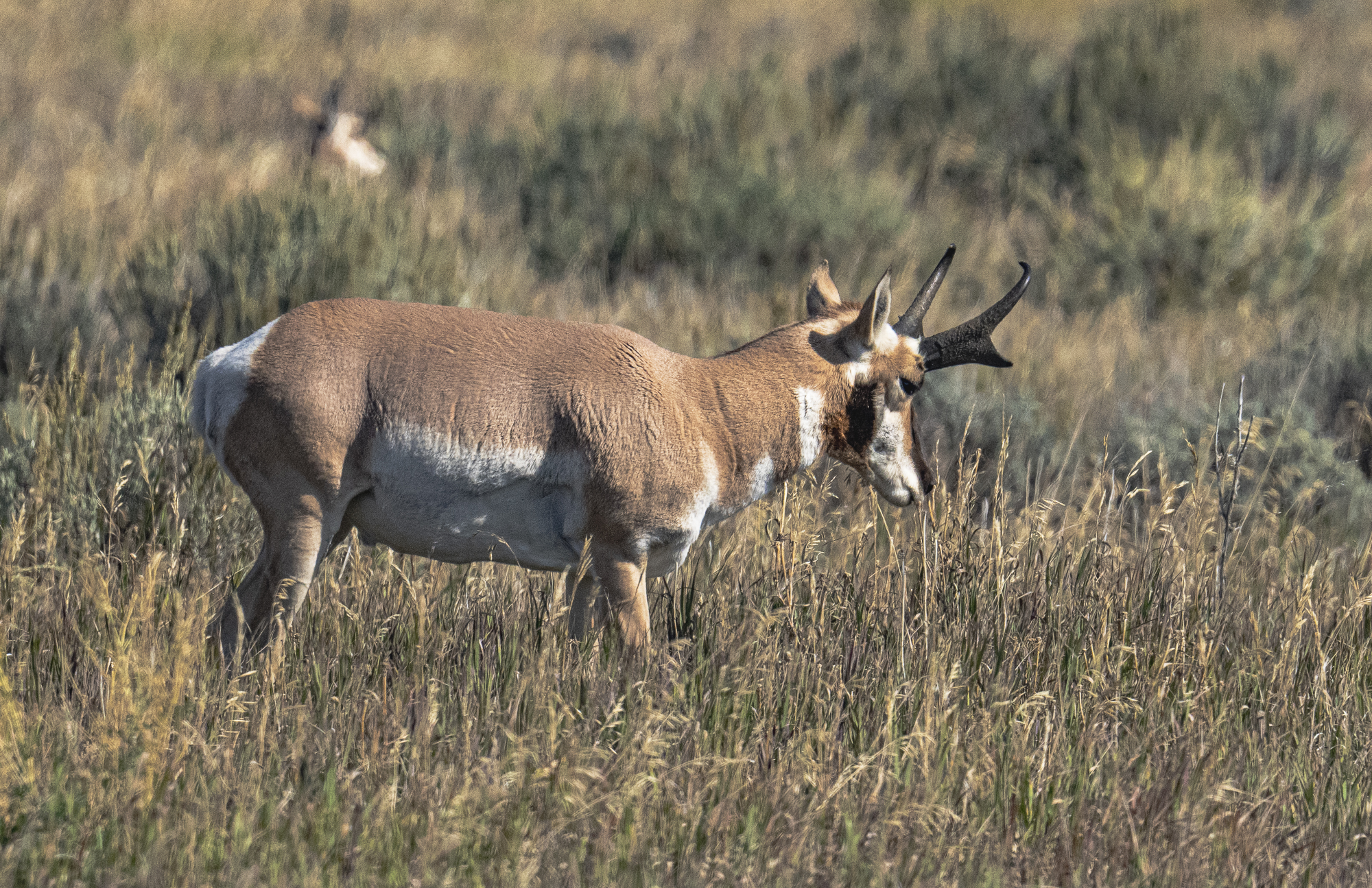
Well, they’re called Pronghorns because of the shape of their horns, and the fact that they’re not Antelope. Their closest relatives are Okapi in Africa.
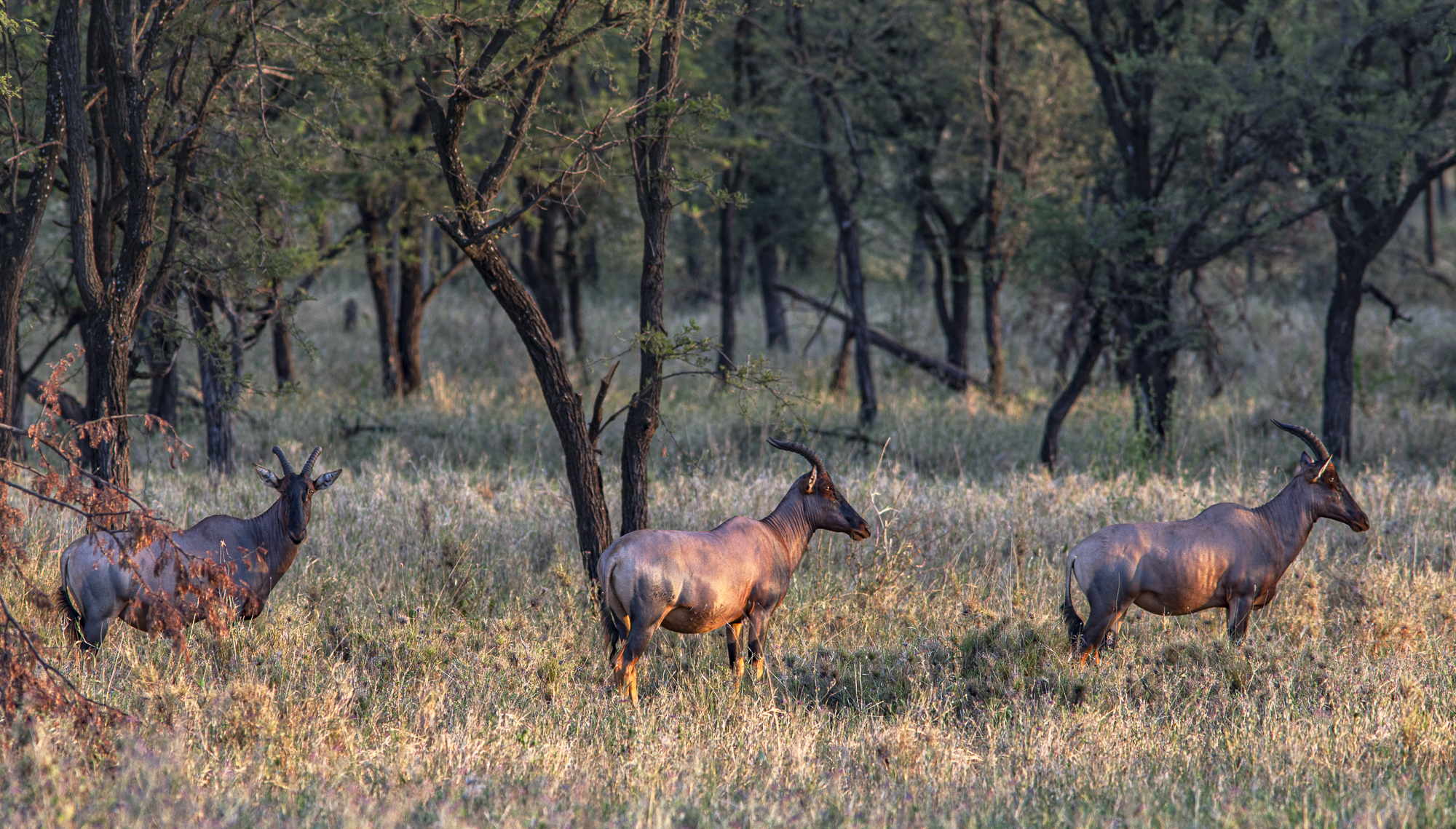
Okay, I see a resemblance. But they’re also related to ……. Giraffes?!
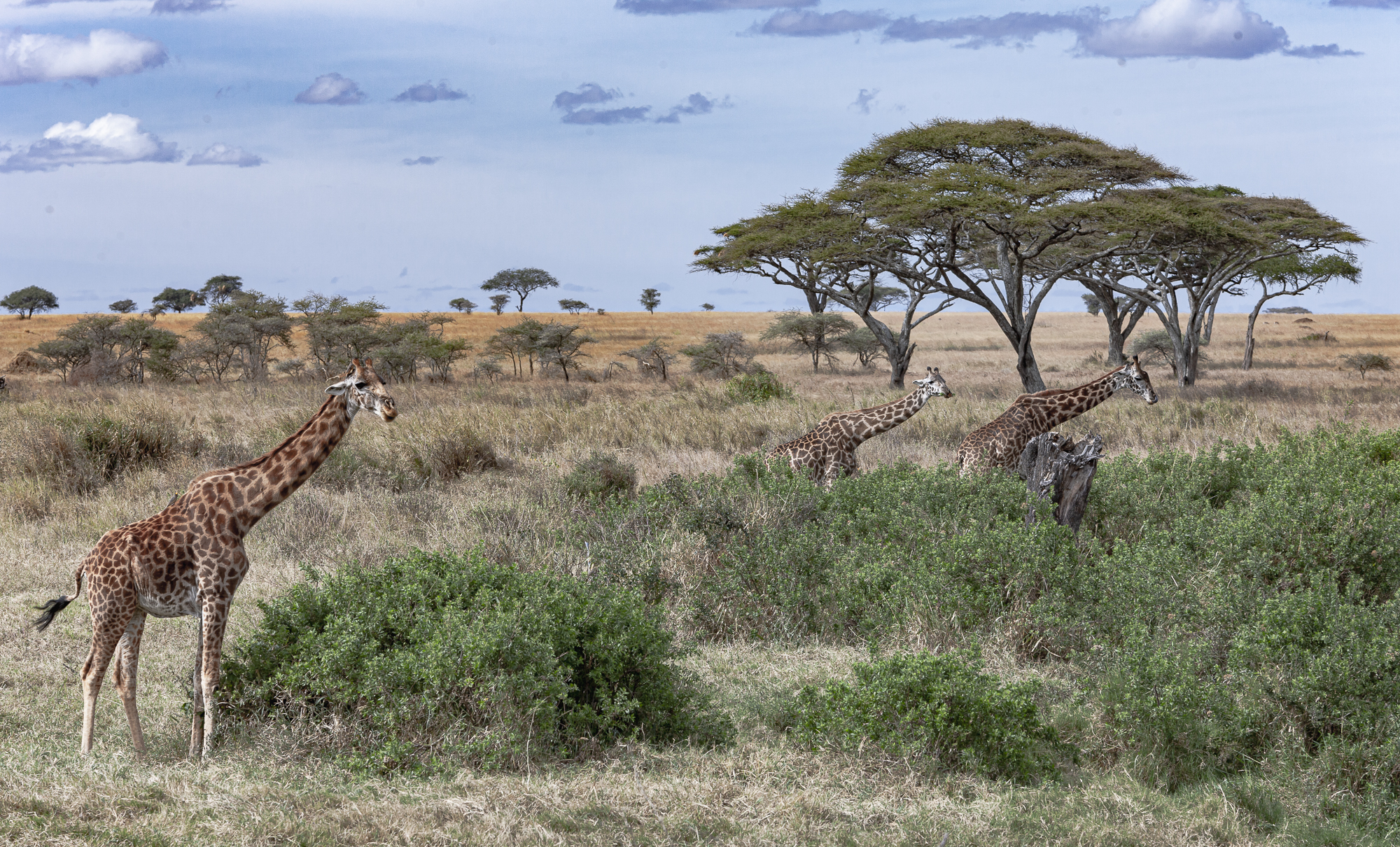
Now that’s a stretch! I guess that a few million years can do wonders.
Don’t forget if you are a Silver or Gold member and signed in, you can click on an image to see it larger.
On the following day (September 14th), my wife and I drove to the Oxbow of the Snake River near Moran Junction. This has been a great location for sunrises, as seen in images from several of my earlier articles. This time the early morning air quality didn’t improve. We waited a few hours for the air to clear and took a few images to record the haze that settled over the western states during the Summer and early Autumn months because of many woodlands fires in Northern California, Oregon, Washington, Idaho, and Montana. The adverse impact on wildlife and habitat is incalculable.
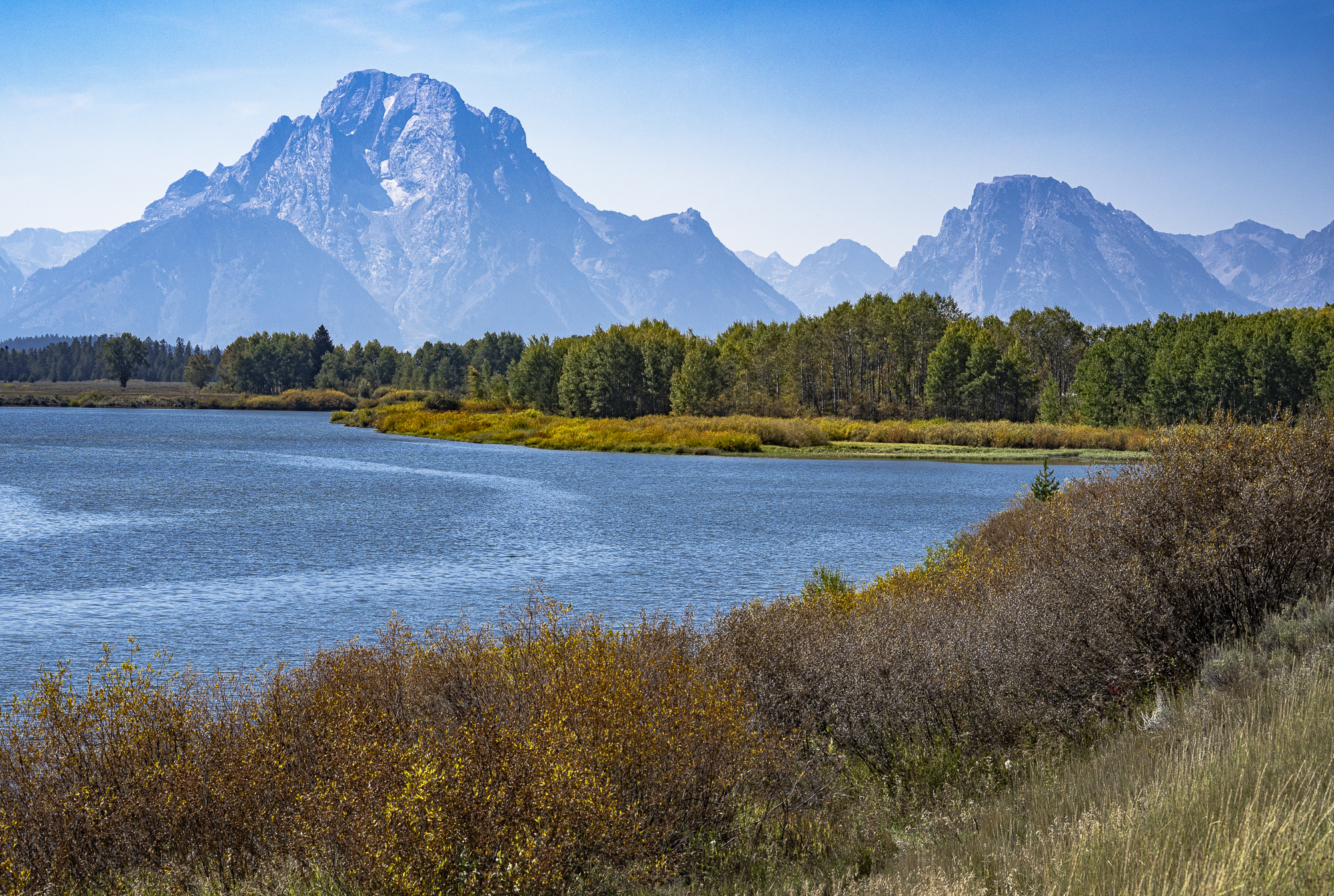
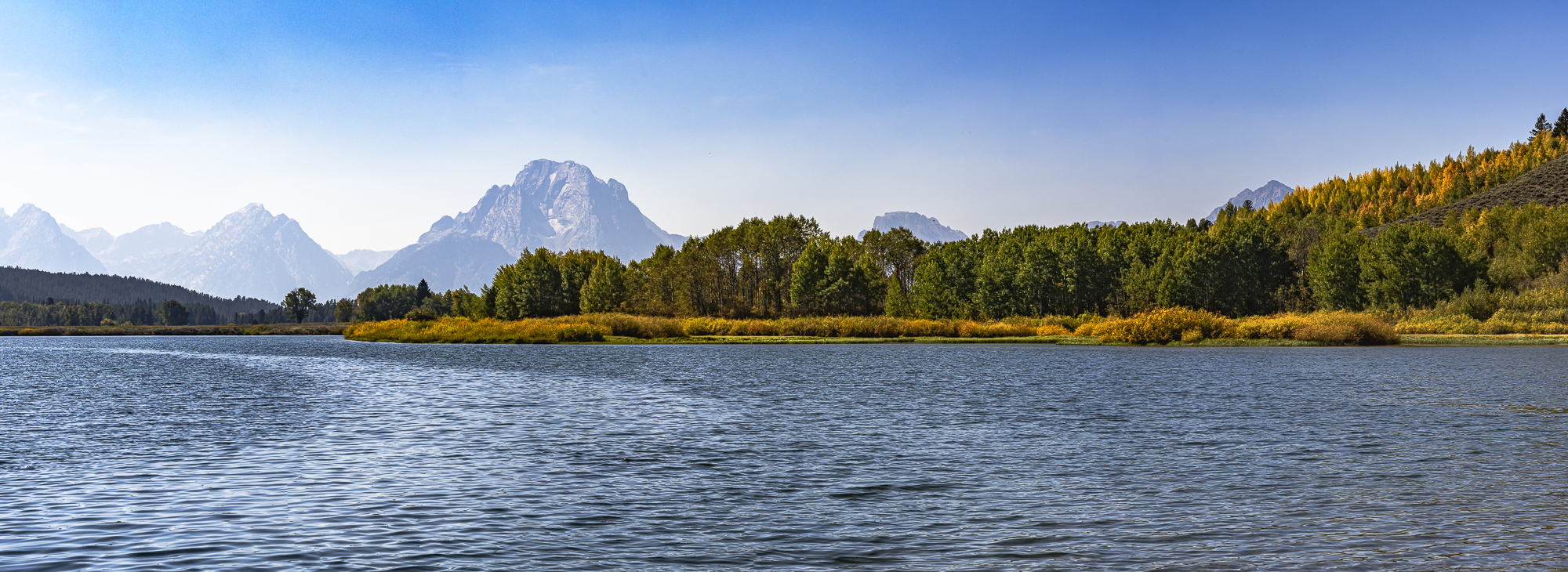
On September 15th, I found a few other scenes to capture south of the southern park entrance just before the air started clearing.
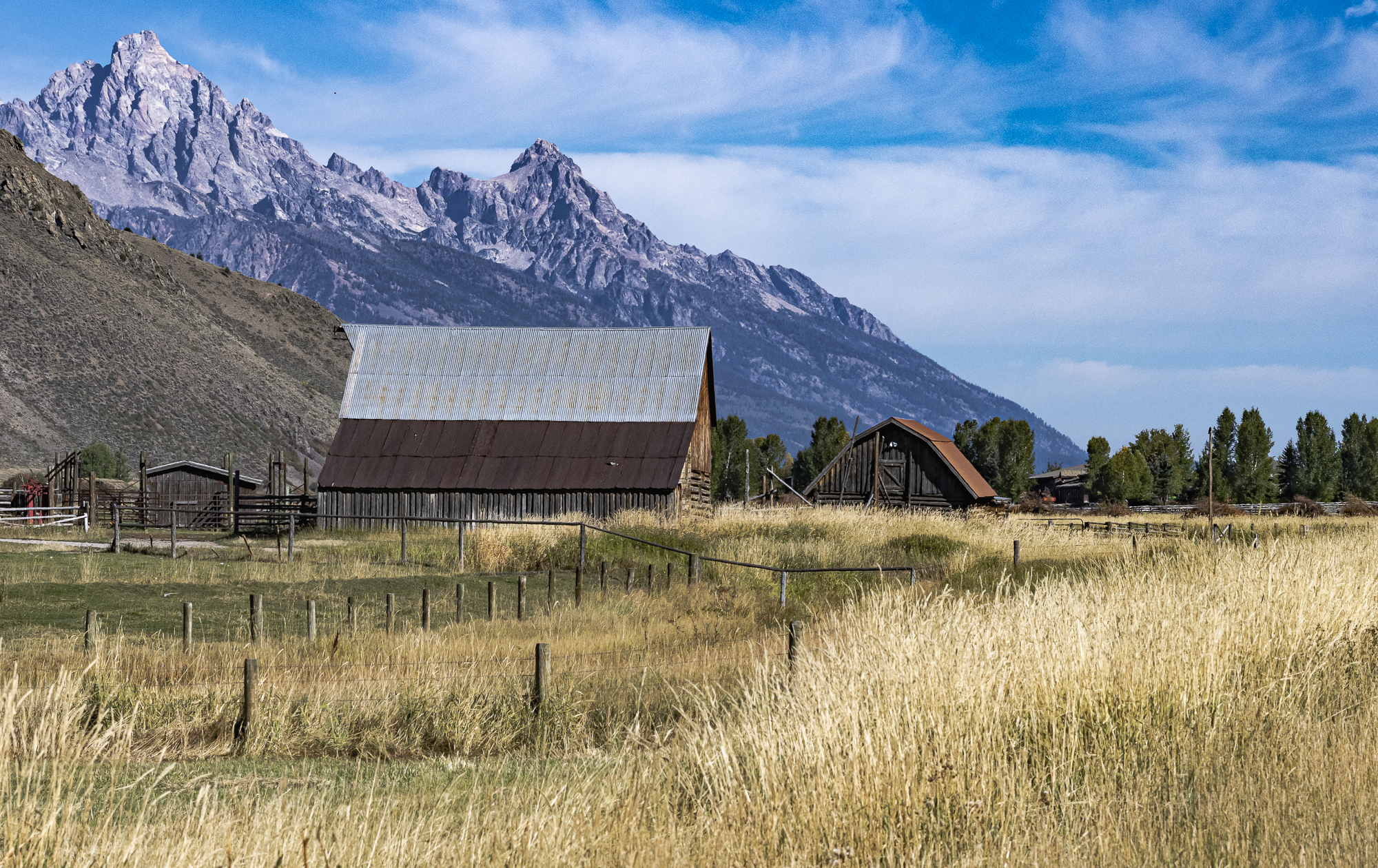

My wife suggested this last image, which we passed while on our way to Teton NP. Ganged mailboxes are a photographic cliché, except that there are 49 boxes in a row compared with the usual 10 or 12 in many rural areas. It took many vertical image segments to put this stitched panorama together. That large number and the synchronicity between mailbox posts and trees make this an enjoyable and winsome image.
One half-hour later we pulled up to a turnout just before the Mormon Barns historic settlement exhibit. The air quality improved enough to show detail in the mountains. I hiked away from the road far enough to get a good perspective of one house and barn against the backdrop of the Tetons. The next image was taken with my Zeiss Loxia 85mm f2.8 lens on my Sony Alfa 1. It emphasizes the dominant Teton mountain backdrop. The tallest mountain is Grand Teton Peak. It was necessary to wait 25 minutes for a moment when no visitors occupied the path between the parking lot and the barns.

While I like this image a lot, I decided that a better one would be a panorama (shown next) containing most of the Teton Range to contrast the house and barn with the imposing mountains. The extensive prairie foreground also serves to accentuate the sense of loneliness that the pioneers who built these homesteads must have experienced.
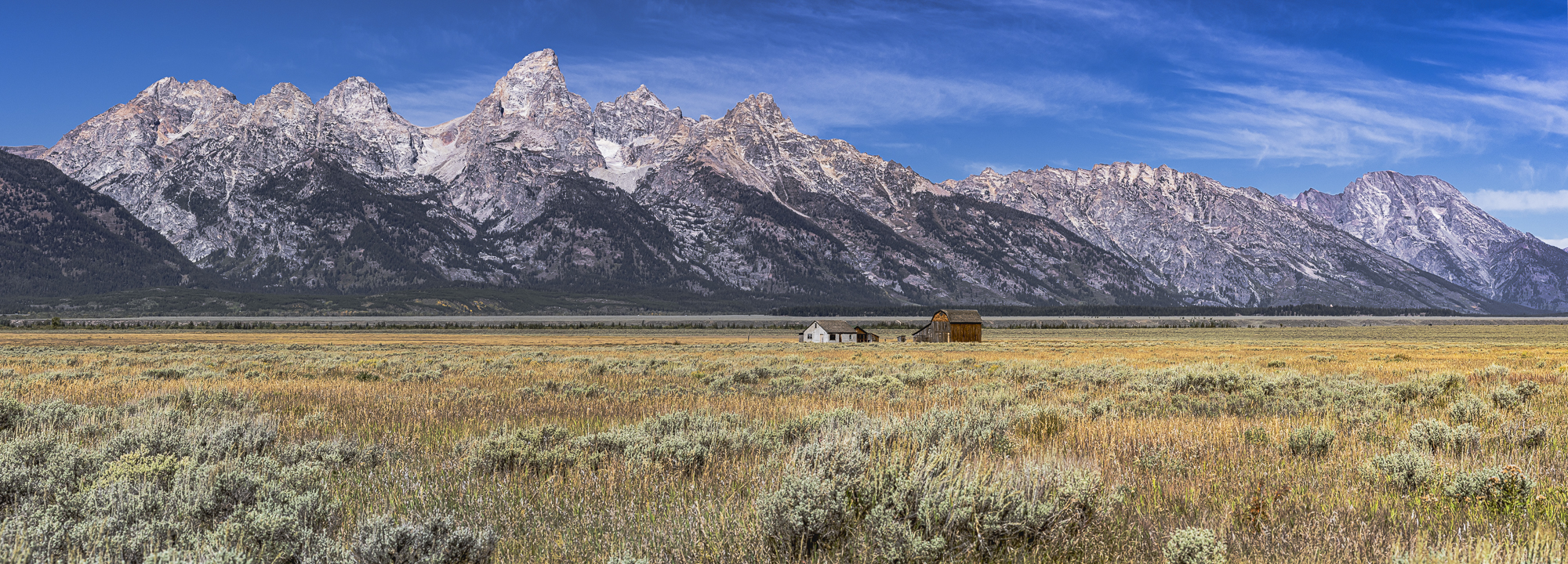
We arrived at Schwabacher Landing at sunrise the next morning. My friends had been there before sundown the day before and were fortunate to see a large bull moose and his large cow wading in the Snake River. The bull’s name is Hoback, and he is one of the two largest Moose in the park. While a swarm of photographers set up wide-angle lenses to capture sunrise on the Tetons, I kept the 200-600 lens on my camera hoping that Hoback and his girlfriend would show up. From the washed-out appearance of the mountains, it was evident that the landscape would not compare well with the images that I made in earlier years.
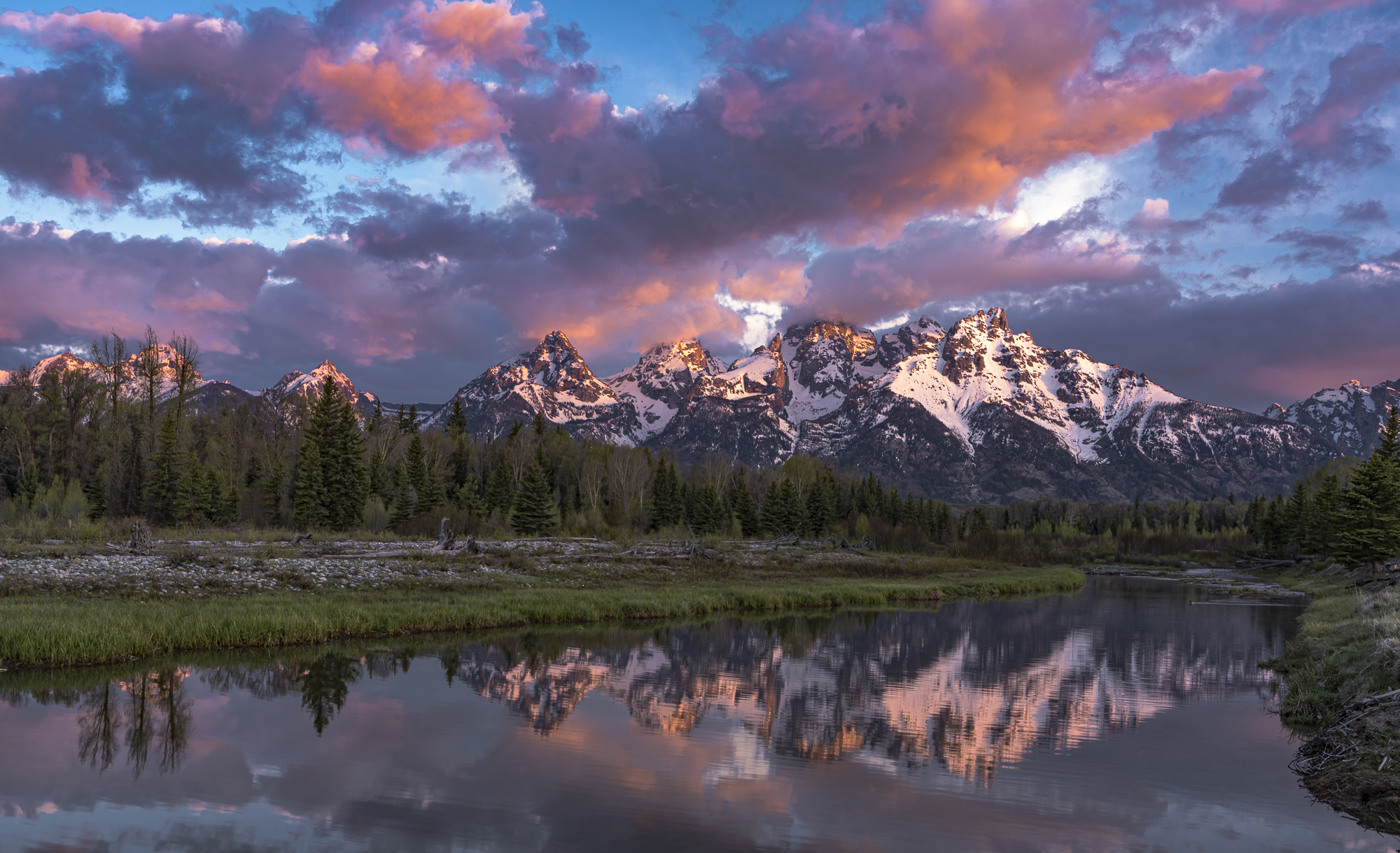
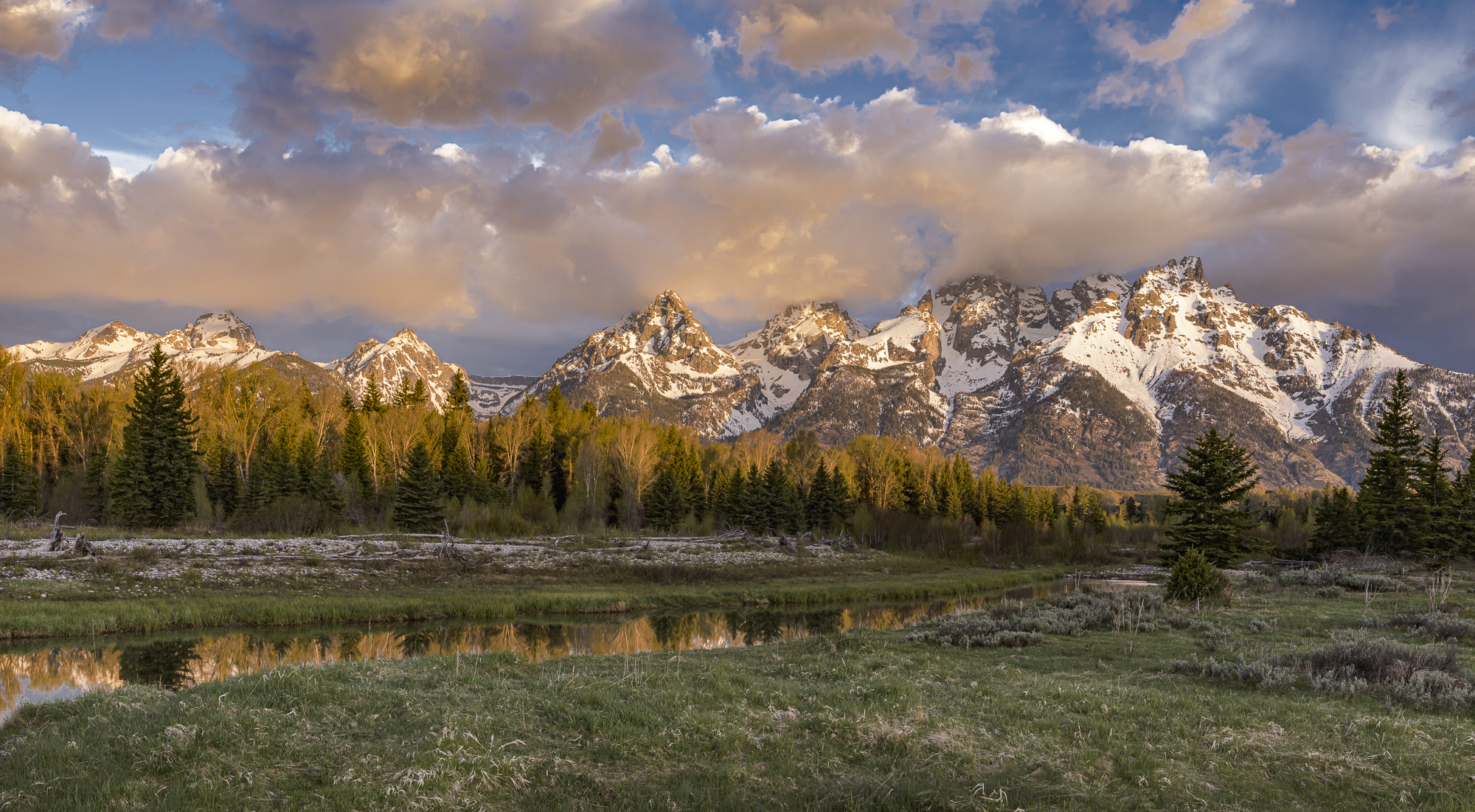
It would have been disappointing if the Moose showed up while I was changing gear. So I waited. But, no Hoback.
I started to pack up my gear when someone said, “There he is!”. At first, I didn’t see him. Then I spotted his antlers through an opening in the brush. It appeared that he and his cow were just waiting for all of us to leave, while we were waiting for him to show himself. So, I took a series of images figuring that half a moose is better than none. Two of these are shown below. In a way, I kind of like them for their unusual perspective.
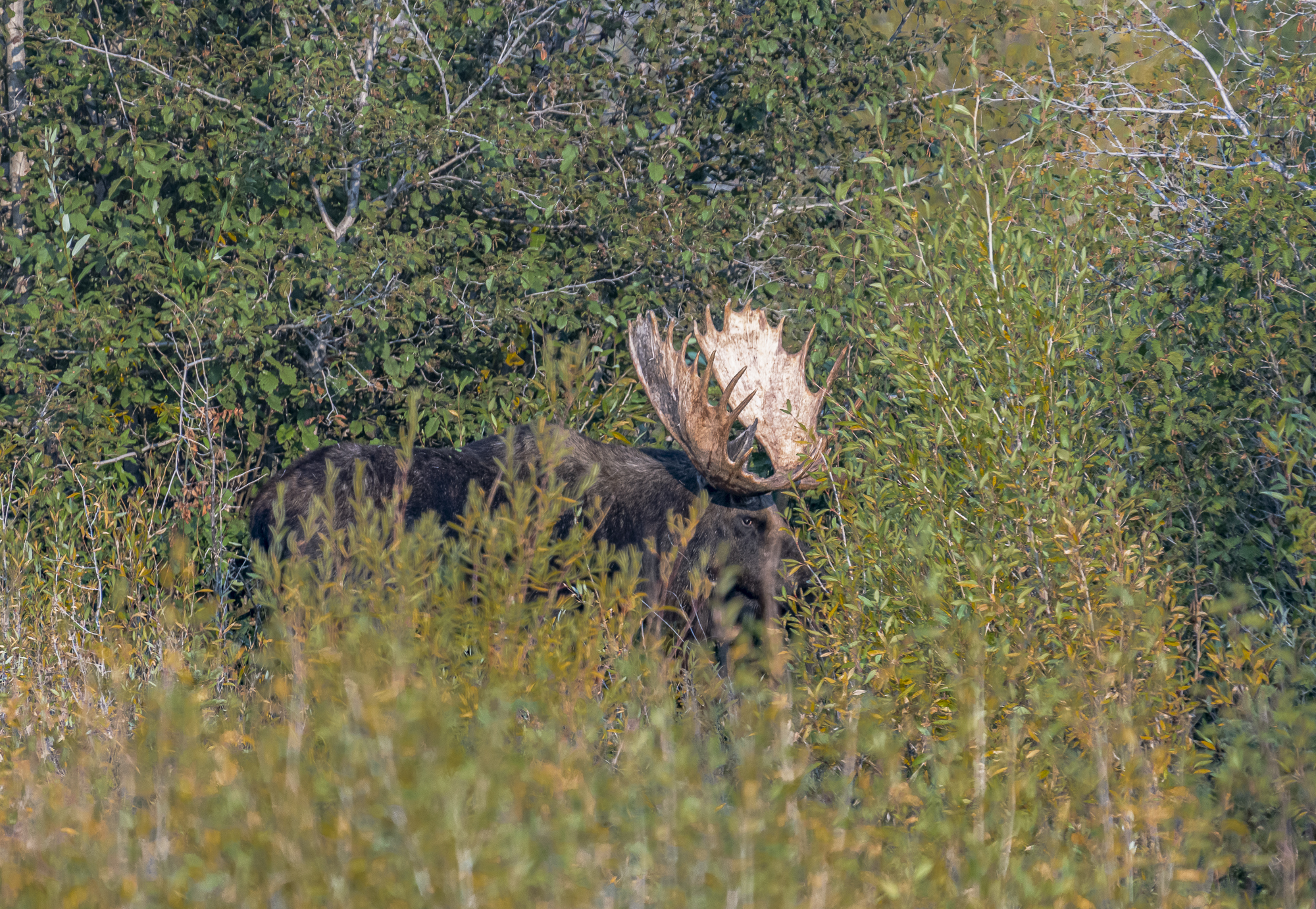
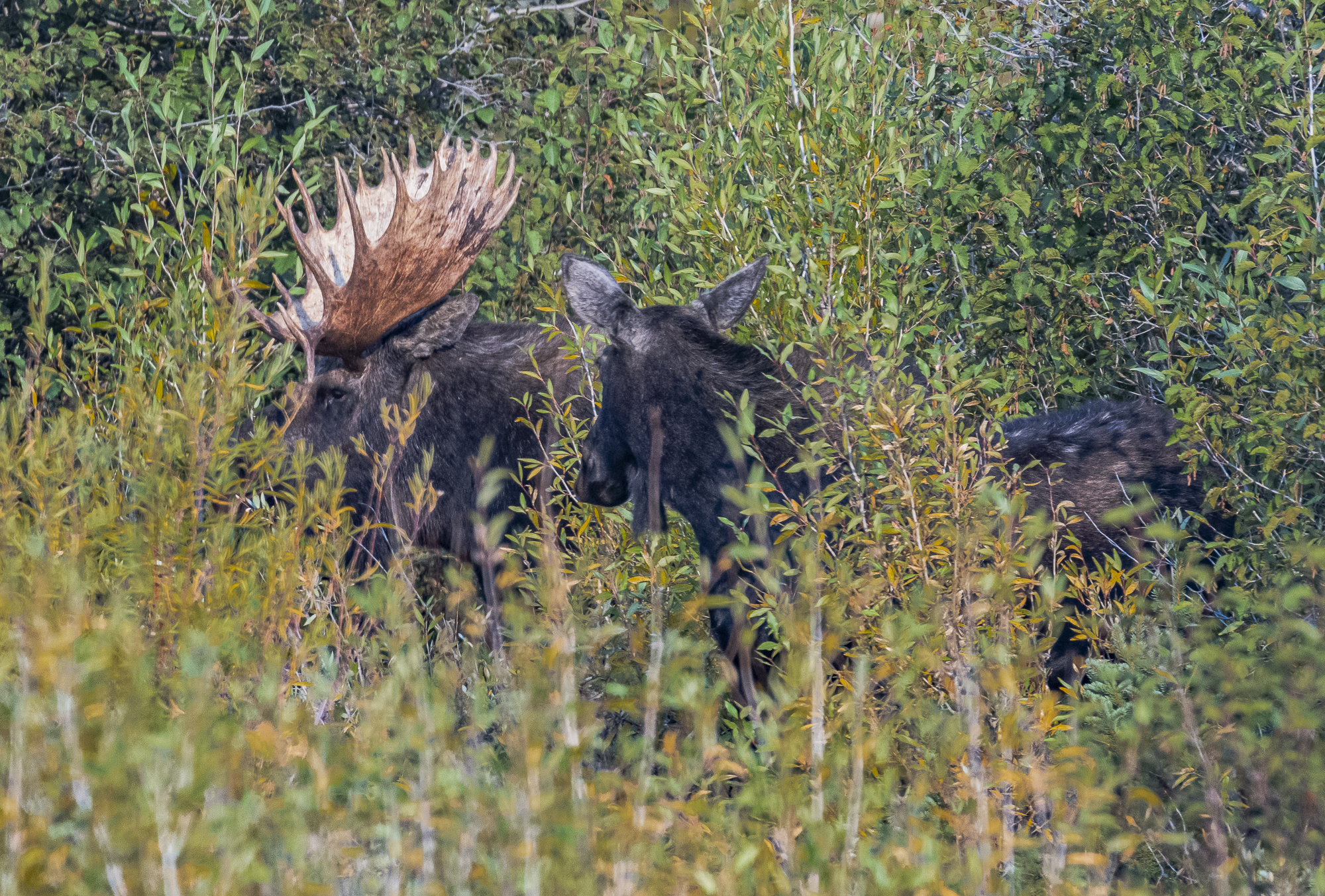
This trip to the Tetons didn’t match my expectations. There are always occasions like that, though I still enjoyed being there. From what I encountered, I had no illusions about what the next two days in Yellowstone would be like as the two parks are only an hour’s drive apart. So, I decided to spend my time there at the Mammoth Hot Spring Terraces, photographing them from a different perspective with my Sony 14mm f1.8 GM lens. In any case, I would be driving through the northwest portion of the park that had always been rich with the presence of Elk and Grizzly’s; and I could stop to photograph any wildlife that showed up. That didn’t happen. But, the new plan was sensible given continuing bad air quality and too many cars and people.
Be sure to read: Part II – Yellowstone NP Coming Soon
Harvey Stearn
October 2021
Sedona, AZ
To see the scope and essence of Harvey Stearn's photographic art please visit www.CameraStops.com. Mr. Stearn began photographing Western landscapes and wildlife at the age of 13, spent 50 years pursuing his passion in the field and in the darkroom before fully converting to digital photography in 2002. He developed color prints as well as monochrome, but switched over to digital capture and editing in 2002. Though he was a top executive for two large scale land development and home building corporations, he always found time for his fine art photography which won many awards. His work was exhibited in art museums in Southern California and Arizona, and was also featured in billboard advertisements and published in magazines. Mr. Stearn served on the California Arts Council for nine years, including two years as Chairman and another two as Vice Chairman. In addition, he was the founding Chairman of the John Wayne Airport Arts Commission in Orange County, California. Mr. Stearn’s work was sold through Arizona galleries for 15 years. In recent years he wrote 33 illustrated articles for PhotoPXL.com and 14 articles for Luminous-Landscape.com. In 2013 he published a book entitled “In Search of the Old West” which has been widely acclaimed. He was a guest lecturer on photography on a cruise ship visiting Chile, Argentina, Uruguay and the Falkland Islands. His work was among the top 100 images printed in NANPA's Showcase publications in 2019 and 2020. Images have been edited and selected for two new books on Landscape photography which will be published in late 2024 and early 2025.






